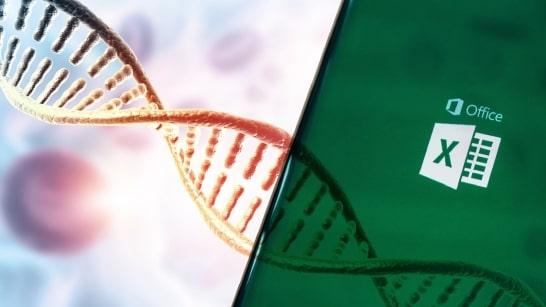Scientists Renamed Human Genes because of Microsoft Excel

Microsoft Excel has been a darling to many researchers in the biology sector and other major fields. It has been the most preferred tool for various research for quite a long time despite some challenges. One crucial problem is the naming system used for human genes.
Traditionally, every gene name has two name parts: a string and an integral part called a symbol. Researchers encountered problems when Microsoft Excel interpreted the numerical part of the name (the symbol) for a date. As such, a solution had to be found to aid the proper coordination of research. This will be seen as the Hot Target of the genetics research industry.
Over the last twelve months or so, researchers embarked on a journey to rename the affected genes, and they have successfully renamed 27 genes as we write this. While you may think this was not appropriate, scientists had no alternative since Excel does not allow you to turn off auto-formatting dates. This makes it easy to corrupt data by exporting to CSV or importing back to Excel without consideration for formatting.
In a report released earlier in August, the Hugo Gene Nomenclature Committee (HGNC) said it had released new guidelines for gene naming. To many scientists, that’s one barrier that has been put aside. However, the organisation that is tasked with regulating the naming of genes will have to store the old names and symbols in a bid to prevent confusion.
The New-look
Following the new naming guidelines, Membrane Associated Ring-CH-Type Finger 1, which was previously abbreviated as MARCH1, will now be known as MARCHF1. Senior members of the HGNC revealed to the verge that gene naming is more of a consensus thing than just a directive. This is a shift from the old days when researchers would have their way of naming genes and often giving them fancy names.
Therefore, the committee had to consult with researchers before announcing the changes. Primarily, the HGNC considered researchers whose work will be affected by the changes the most.
HGNC holds that gene names should be unique and must not spell out offensive words in any case regardless of the language. HGNC officials say that changes in gene naming procedures are taken seriously, given that genes are the backbone of many types of research.
In the past, genes with names that could be read as nouns – leading to misinterpretation and false positives – have been renamed. Bruford, a senior member of the committee, is quoted as saying that the gene name formulation takes into account a situation of a clinician explaining the mutation of a particular gene to a layman patient.
The Expectation and Reception
The news was warmly received by researchers across the divide, with some taking to Twitter to express their joy. However, many expected that Microsoft would perhaps release a version of the Excel software capable of handling genetics research without messing around with data. Even so, the company hasn’t expressed any interest in the preceding and is yet to comment on the new developments. According to Bruford, Microsoft is justified to avoid changing its software to cater to a single-use case while there are a hundred others that are already satisfied.
